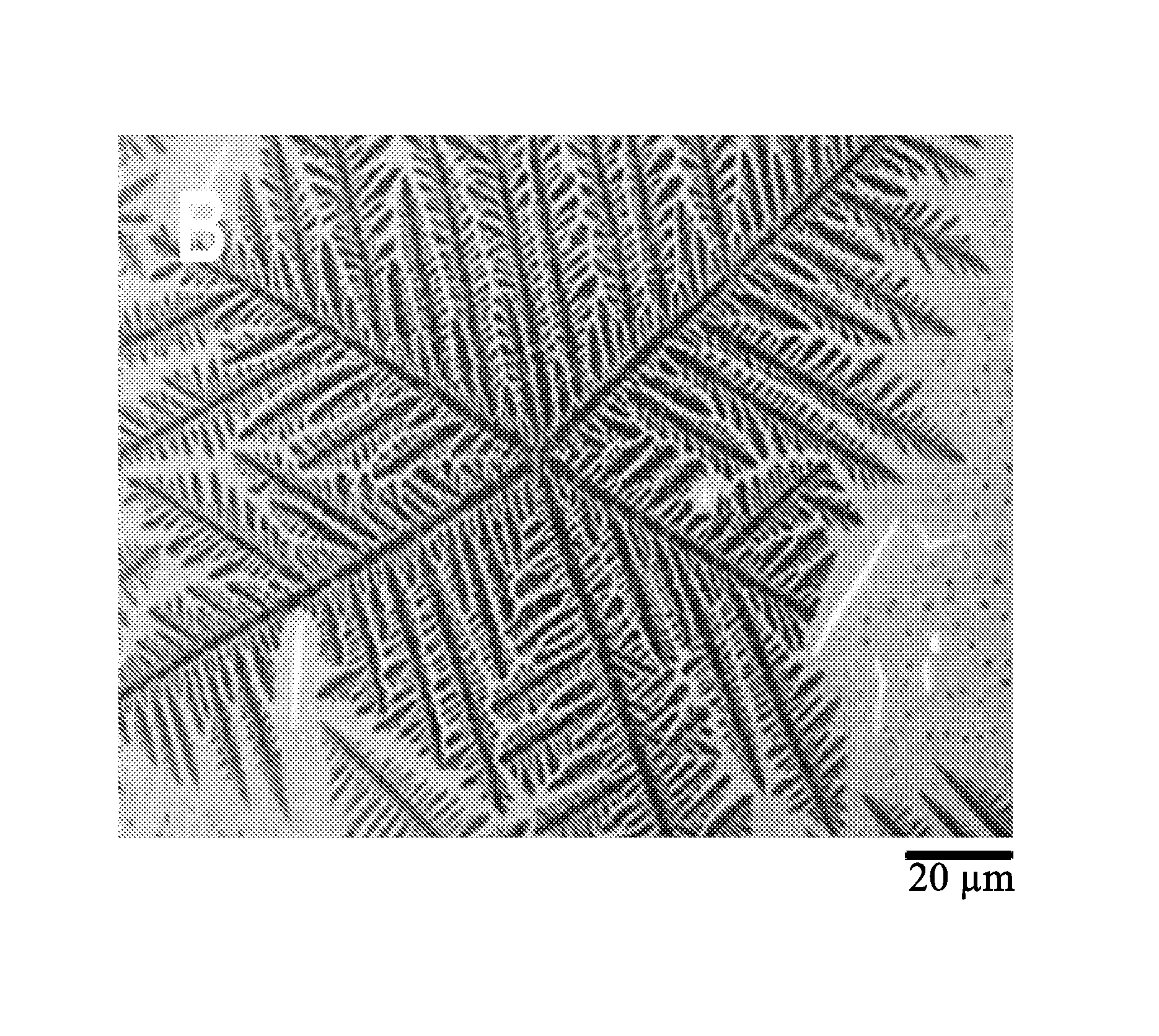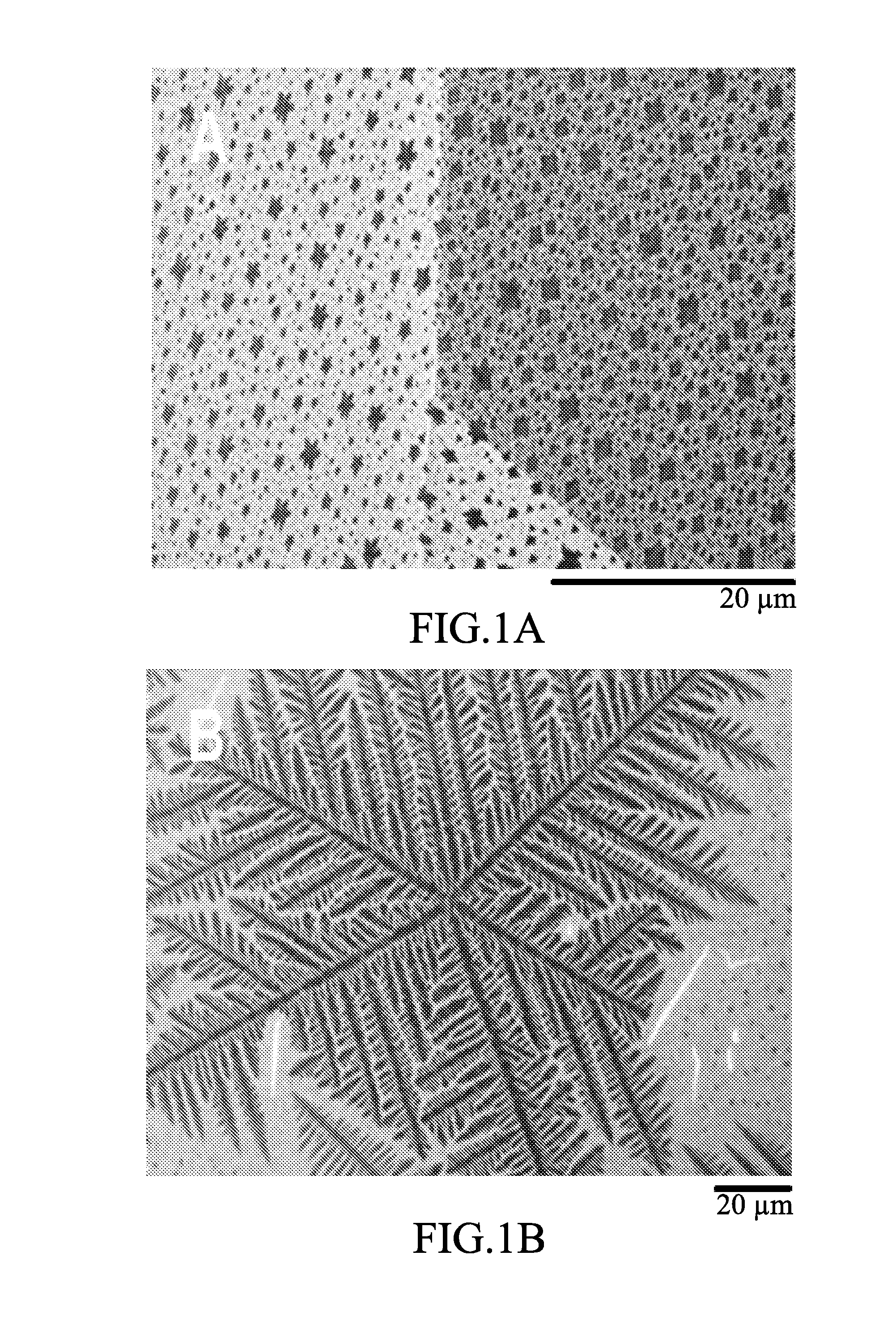Graphene and its growth
a graphene and dendrite technology, applied in the direction of crystal growth process, polycrystalline material growth, chemically reactive gas, etc., can solve the problems of difficult to achieve flat monolayer, crystalline domain, large-area monolayer graphene plate, etc., to achieve excellent quality, low barrier, and suitable for large-scale manufacturing
- Summary
- Abstract
- Description
- Claims
- Application Information
AI Technical Summary
Benefits of technology
Problems solved by technology
Method used
Image
Examples
example 1
[0016]Example 1 involves first providing an annealed copper foil of 99.98% purity, 0.025 mm thickness, that is disposed on a quartz vessel, and providing an electronic temperature controller-equipped furnace having three predetermined regions. The quartz pipe in the furnace is made into vacuum by turbo-molecular pump, for which gas pressure is controlled through a feedback control loop by comparing a reading of the barometer against a predetermined pressure for regulating a throttle valve, and the incoming gas is modulated by electronic mass flow controllers. During the graphene nucleation and growth, only a rotary vane pump with hydrocarbon pump oil is used while the turbomolecular pump is by-passed from the gas flow. With the vapor of hydrocarbon compounds, obtained from the hydrocarbon pump fluid in the rotary vane pump, and the throttle valve is utilized to equilibrate the throughput and hydrogen gas intake of the pump within several tens of mTorr for carrying out low pressure c...
example 2
[0018]After multiple graphene nuclei are created according to the method of Example 1, if multiple graphene dendrites are desired on the copper foil surface, copper foil would be required to stay in the quartz pipe of the furnace, and the copper foil would need to continue to be maintained in a high temperature state and the hydrogen gas intake would need to be maintained. Also a predetermined flow rate and intake time of 1 minute to 30 minutes of 2 sccm methane gas should be put in place. Hydrogen gas would still be permitted to enter after the intake time but methane gas is stopped, and the copper foil is pulled out of the furnace's high temperature region without breaking the vacuum. As shown in FIG. 1B, the graphene dendrite has 6 main branches, and each main branch has a large aspect ratio, and the main branch can give rise to multiple second branches, and more branches thereon, for forming novel snowflake-like graphene dendrites.
example 3
[0019]If it is desired to take a further step into turning snowflake-like graphene dendrites into merged graphene plates, it would be required to, following the end of Example 1 of a method for creating multiple graphene nuclei, continue maintaining the high temperature status and terminate the intake of hydrogen gas, introduce 2 sccm methane of a predetermined flow rate and an intake time of 30 minutes to 100 minutes, and then turn off the methane flow and pull the quartz carrier of the copper foils out of the high temperature region of the furnace. At this point, branches of multiple snowflake-like graphene flakes on the copper foil would grow laterally and merge to form a plate-like graphene film.
PUM
 Login to View More
Login to View More Abstract
Description
Claims
Application Information
 Login to View More
Login to View More - R&D
- Intellectual Property
- Life Sciences
- Materials
- Tech Scout
- Unparalleled Data Quality
- Higher Quality Content
- 60% Fewer Hallucinations
Browse by: Latest US Patents, China's latest patents, Technical Efficacy Thesaurus, Application Domain, Technology Topic, Popular Technical Reports.
© 2025 PatSnap. All rights reserved.Legal|Privacy policy|Modern Slavery Act Transparency Statement|Sitemap|About US| Contact US: help@patsnap.com


